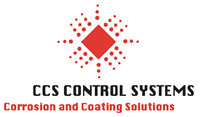An ominous cloud of smoke continues to billow as the sprinklers rain water throughout the facility. The production manager's mechanical and electrical equipment is rapidly deteriorating, and within hours, the previously pristine equipment normally used to manufacture precision circuit boards will have a thin coating of flash rust with further damage forthcoming.

While this was not a large fire and the fire department was able to control it very quickly, the production manager understands that his facility and equipment will require a significant amount of clean up and this may take some time. However, time is the enemy in these situations and decisive action is needed to ensure that all damages are mitigated. The production manager weighs his options, as the corrosive agents associated with smoke continue to attack the various metals on not only the mechanical equipment, but the electronics as well.
Another thing weighing on his mind is the fact that he has government contracts that he must fulfill. Any time taken to decontaminate or refurbish his equipment is lost production time. Failure to deliver on these government contracts could mean lost profits in the short term and lost business in the long term. Given the situation, preserving the production equipment from corrosion is now his number one priority.
Preserving Equipment, Preserving Options
The mechanism, amount, and progression of corrosion is dependent upon many factors, including the type of materials utilized in the construction of the affected equipment, the type and concentration of contamination and the amount of moisture in the air. Depending on these factors, corrosion can progress rapidly and render some equipment irreparably damaged with 24 hours of exposure. Other equipment can sit for weeks without degrading if the contamination levels and environmental factors are favorable.
To prevent degradation of electrical, electronic, and mechanical equipment, proper preservation methods must be followed. Ideally, the equipment needs to be stabilized by moving it to a humidity and temperature-controlled environment. If the equipment can't be moved, use air-conditioning and/or dehumidifiers to lower the relative humidity. This will slow down the onset and progression of corrosion.
Further, humidity should be in a range between 45 percent and 55 percent and the temperature should be as cool as is practical. Humidity higher than this level will not sufficiently retard the corrosion process. Conversely, some equipment, mainly electronics, can be damaged by static electricity resulting from dry air when the relative humidity is less than 45 percent.
Regardless of whether or not the above conditions can be met, application of an industrial strength lubricating agent or corrosion inhibitor should be completed on exposed mechanical metal surfaces. Cost effective corrosion inhibitors are typically chemical compounds that stop or slow down the onset of corrosion and/or rust of metals and alloys. These inhibitors are easy to apply to machining equipment and vary in their effectiveness and permanence. Although each type of coating depends on several protective mechanisms, their common attribute is the exclusion of water and air from the metal surface. The application of these inhibitors normally forms a thin film on the surface of the material that prevents the elements from attacking the metal surfaces.
For electronics preservation, some additional care is required. It is not recommended that an everyday lubricant be placed on electronics. Specialty chemicals are necessary to ensure that the electrical properties of contacts, wiring, and components are not altered. Further, care is required when dealing with electronics preservation, as some compounds can damage paints, plastics, or insulation, thus altering the electronic assembly.
Proper application of the electronics preservative is also a necessity. As such, it is often suggested that a professional company specializing in electronics preservation and restoration is contacted for this process.
When used properly, the electronics preservative provides an ultra-thin film to protect highly critical metal surfaces within the electronic assembly. Further, most of the corrosion inhibiting compounds displace water and offer protection for cables and surrounding surfaces. Some compounds can be used while allowing the electrical system to be powered on (always follow manufacturer warnings and directions). This is another situation in which a professional company with knowledge and experience dealing with these types of losses would be beneficial.
By providing the contaminated equipment with a quick supply of both mechanical and
electronics preservative, the options associated with recovery are more attractive. In the example above, the production manager can now apply the preservative to the mechanical surfaces and electrical components to return the systems to operation for that last government contract. Once the contract is fulfilled, the production manager can provide a scheduled down time for the systems to be restored and reconditioned. This action reduces the potential for business interruption and associated extra expense. Further, the company has likely prevented his customer from switching to a competitor.
Another reason to use preservation is to address the replace versus repair decision more carefully. If the unit is preserved, an educated business decision can be made without being "under the gun" so to speak. If you see the unit continue to deteriorate before your eyes, you are likely to suggest replacement, even though the equipment could have been easily reconditioned later with a simple coating of corrosion inhibitors immediately following the loss event.
It should be noted that while applying preservative to equipment, quick action is still required. As described above, the time allowed to recondition the equipment is dependent on several factors, including the level of contamination and the environment. But it also depends on the type of preservative. Many corrosion inhibiting preservatives are designed for use in cases of everyday use. Not many are designed with a catastrophic fire, smoke, or water loss in mind. As such, the application of the preservative is a necessity, but is by no means the final solution.
To prevent long term effects of contamination, it is vital to seek the services of a professional company that specializes in the assessment, decontamination, and restoration of equipment and electronics. Ensure the company you retain has the knowledge to not only remove the contamination, but the preservative compound you used as well. Be certain to review the techniques used and demand a minimum of a one-year warranty on their workmanship. Finally, determine if the technicians utilized have the experience required to return your equipment to a pre-loss condition.
Assessing the situation quickly, using proper preservation techniques and utilizing professional restoration services can make the difference between a long, expensive recovery effort and a quick return to operation with the ability to serve your customers.












